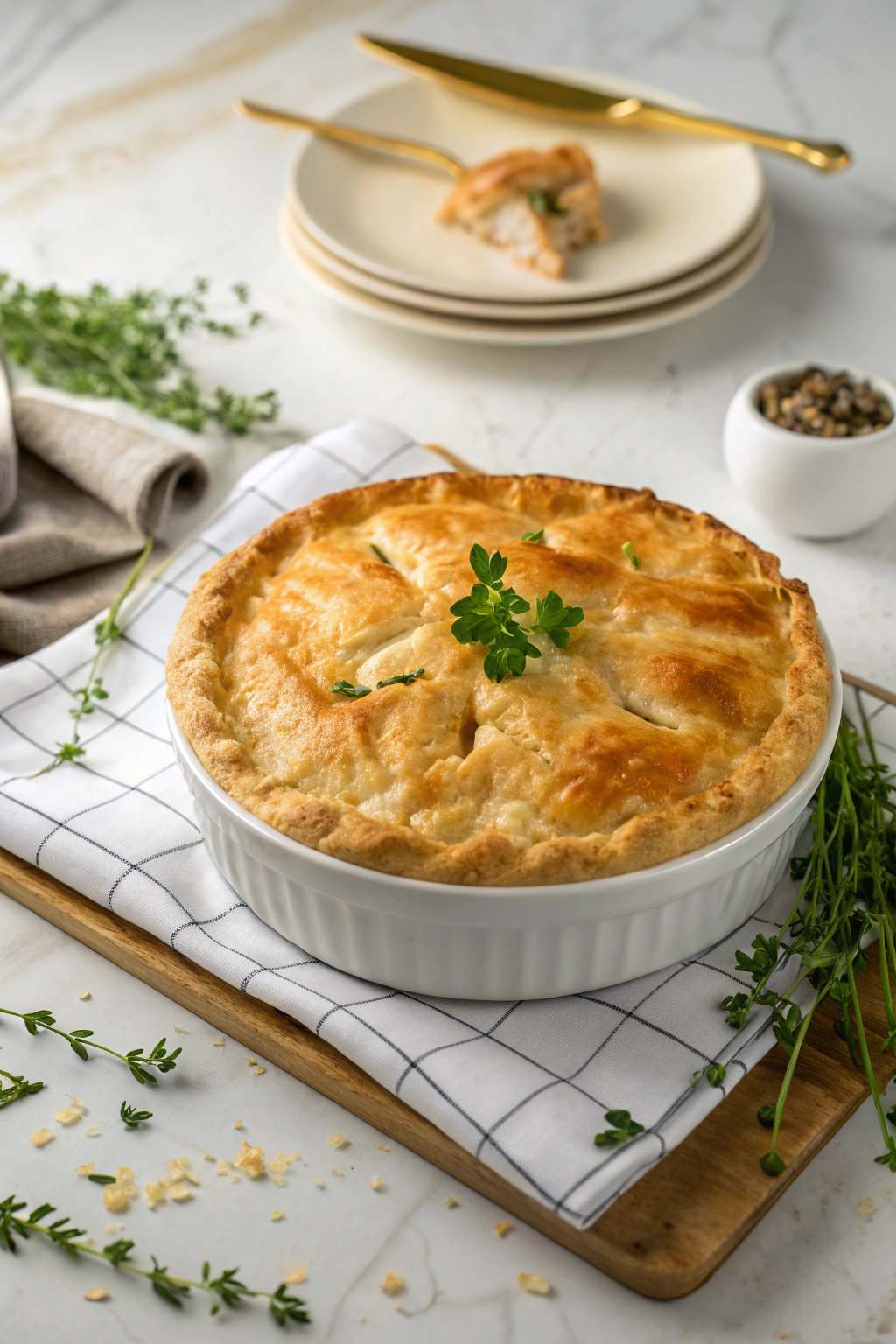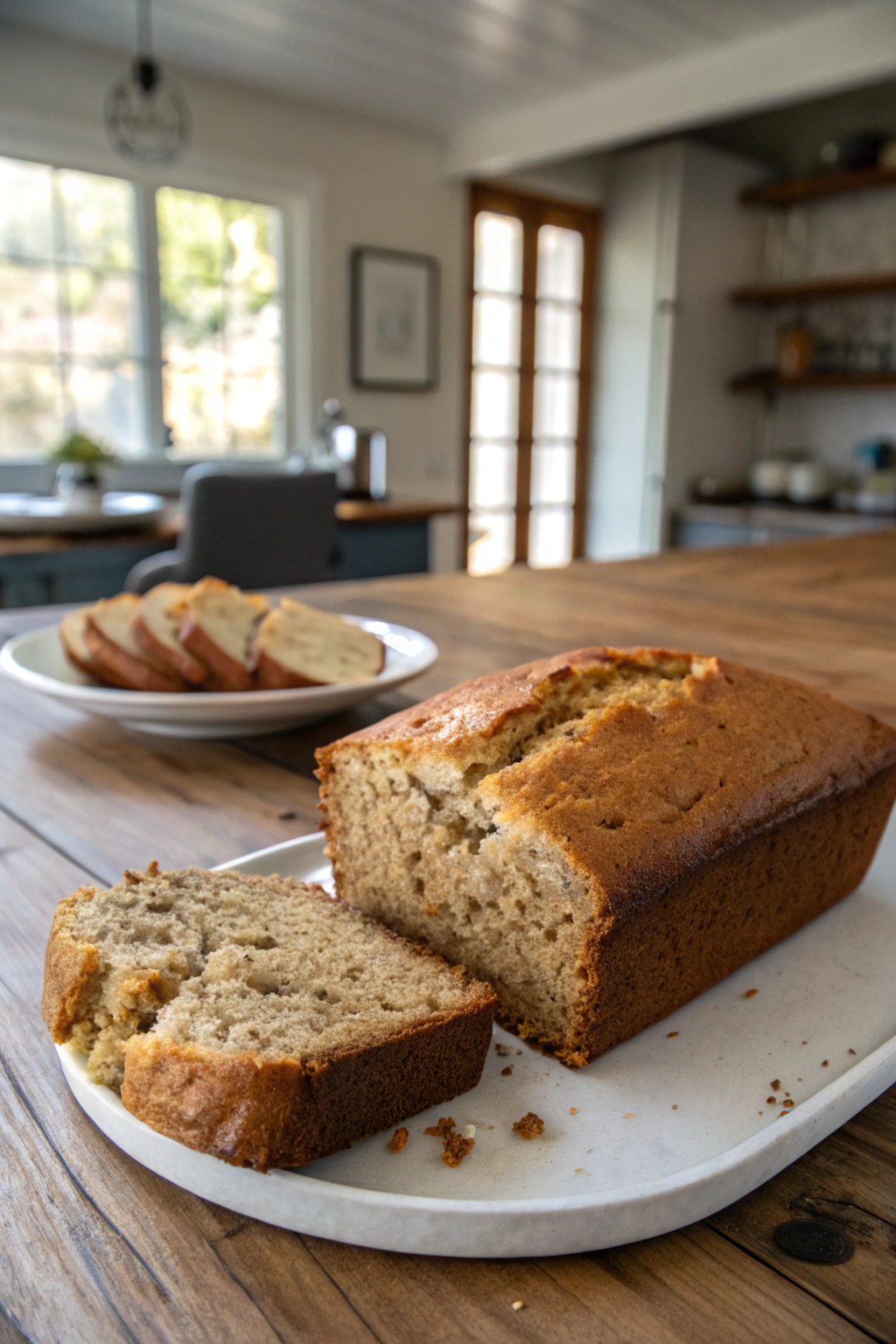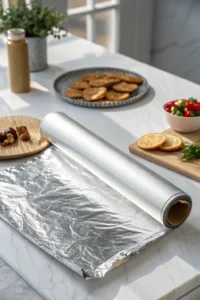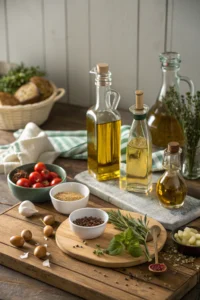Y’all, let me tell you about my potato storage journey! Last fall, I bought a huge 20-pound bag of russets on sale, and boy, did I learn some lessons about how to store potatoes properly. After some sad, sprouted spuds and a few moldy mishaps, I finally figured out the secrets to keeping these kitchen staples fresh longer.
Now I can store potatoes for months without any waste, which saves me both time and money on my grocery runs. Trust me, there’s nothing worse than reaching for a potato only to find it’s gone soft and mushy! Whether you’re stocking up for winter or just trying to make your weekly grocery haul last longer, I’m sharing all my tried-and-true tips for potato storage success.
Essential Tips for Storing Potatoes at Home
Ideal Temperature Ranges for Potato Storage
Here’s something I discovered the hard way – your kitchen counter isn’t the best place to store potatoes! After watching too many spuds go bad too quickly, I learned that the sweet spot for potato storage is between 45-50°F. My basement works perfectly, but if you don’t have one, a garage or cool pantry can do the trick. Just keep them away from that warm spot above your fridge! During summer months, I actually store potatoes in the lowest drawer of my spare fridge – it’s not ideal, but it works better than letting them sprout in our hot Texas kitchen. The key is consistency – sudden temperature changes can make your potatoes think it’s growing season!
Light vs Dark: Finding the Perfect Spot
Let me share a funny story – I once stored potatoes in a clear plastic bin by my kitchen window. Big mistake! Those spuds turned green faster than my kids could say “”French fries.”” You see, when you store potatoes where sunlight hits them, they develop solanine, which isn’t just bitter-tasting but can make you sick too. Now I keep mine in a dark corner of my pantry, tucked away in a brown paper bag with a few holes punched in for airflow. If you’re using a basket, cover it with a dark kitchen towel. Remember, darkness isn’t just for vampires – it’s essential for keeping those taters fresh!
Humidity Levels That Keep Potatoes Fresh
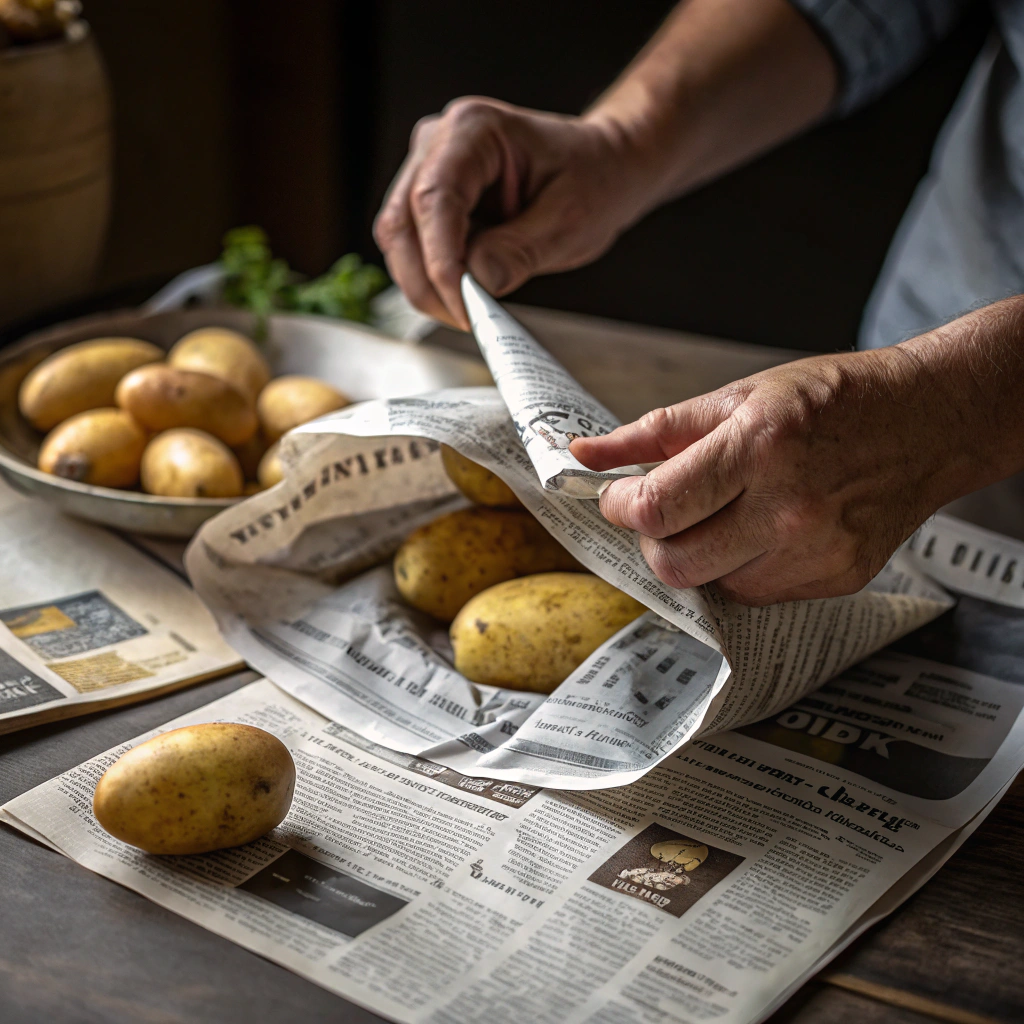
Finding that perfect humidity balance took me some trial and error. Too dry, and your potatoes shrivel up like raisins. Too humid, and you’ll end up with a science experiment growing fuzzy mold. I’ve found the sweet spot is around 85-90% humidity. When I store potatoes now, I add a damp (not wet!) paper towel to their container if the air’s too dry. Just check it every few days and replace as needed. Skip the plastic bags – they trap too much moisture. And whatever you do, don’t wash your potatoes before storing! That extra moisture is just asking for trouble. Let them stay dirty until you’re ready to use them.
Best Containers to Store Potatoes Long-Term
Paper vs Mesh Bags for Potato Storage
When you store potatoes properly, they can last for months! Paper bags are my go-to choice because they provide the perfect balance of airflow and darkness. I learned this trick from my grandmother, who always kept her root vegetables in brown paper sacks in her pantry. Mesh bags are another excellent option for storing potatoes since they allow even better air circulation.
I’ve found that the best way to store potatoes in either container is to first sort them by size. This helps prevent any small spuds from getting squished by their larger cousins. Remember to check your stored potatoes weekly and remove any that show signs of softening or sprouting. Both paper and mesh options let your tubers breathe while protecting them from light exposure.
Traditional Root Cellar Solutions
The time-tested method to store potatoes long-term is in a root cellar, where temperature and humidity stay naturally consistent. My friend’s farmhouse has an amazing old root cellar that keeps potatoes fresh for up to six months! If you’re lucky enough to have a cellar, wooden crates with slatted sides work wonderfully for potato storage. The key is maintaining temperatures between 45-50°F.
Even without a dedicated root cellar, you can create similar conditions in a basement corner. I’ve successfully stored potatoes in woven baskets lined with straw, just like traditional farmers did. The natural insulation helps maintain steady temperatures while allowing excess moisture to escape. This method has saved me countless trips to the grocery store during winter months.
Modern Kitchen Storage Options
Today’s kitchens offer creative ways to store potatoes effectively. I’ve converted a lower cabinet into a perfect potato storage space by adding ventilation holes and light-blocking curtains. Terra cotta storage containers are another fantastic modern solution – they naturally regulate humidity while keeping light out. Remember to store potatoes away from your onions to prevent premature sprouting.
For apartment dwellers, specialized vegetable storage bins with adjustable vents work great. I keep mine under the sink, where it’s consistently cool and dark. Some clever storage solutions even include stackable bins with breathable dividers. Just ensure whatever container you choose allows air circulation while blocking light to maximize your potatoes’ shelf life.
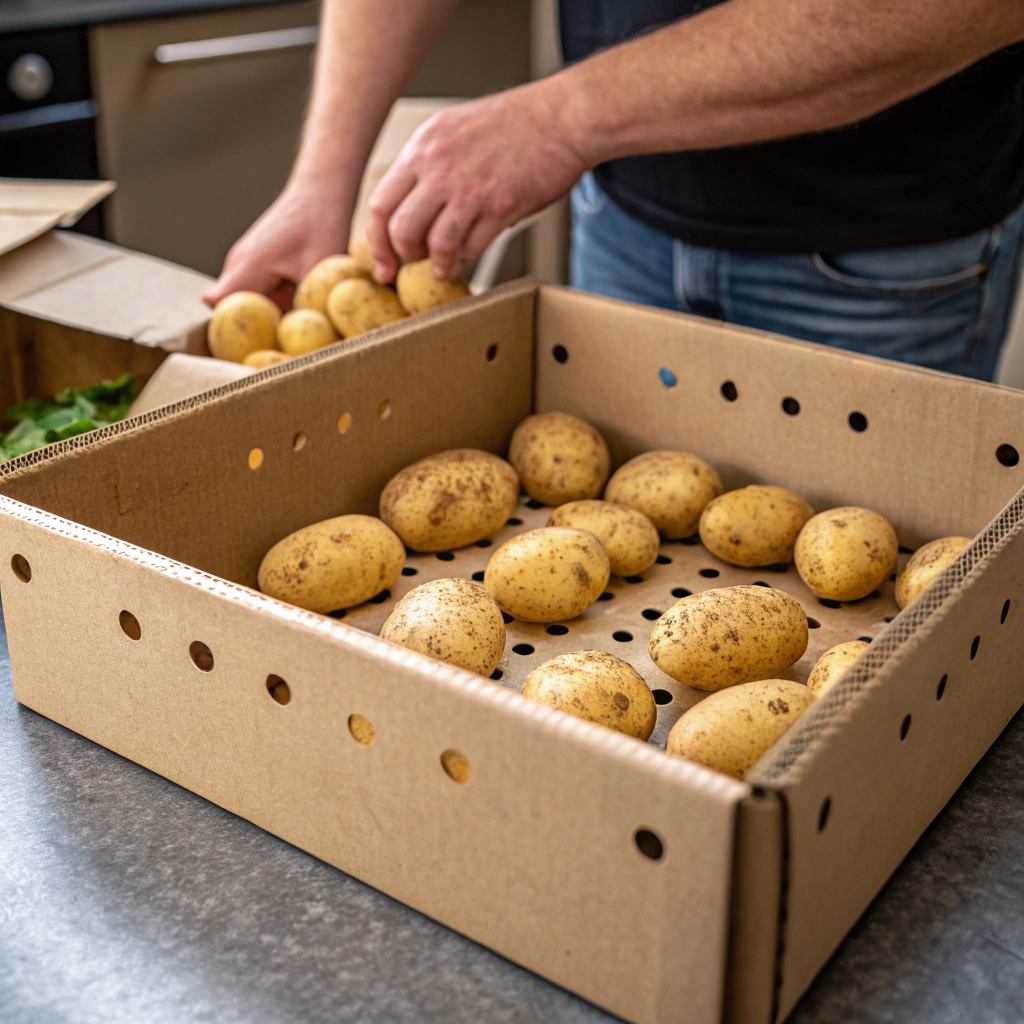
Common Potato Storage Mistakes to Avoid
Why Plastic Bags Are Your Enemy
The worst mistake I see people make is trying to store potatoes in plastic bags from the grocery store. This traps moisture and speeds up spoilage faster than you can say “”mashed potatoes!”” I learned this the hard way when I first started cooking independently. When you store potatoes in plastic, they can’t breathe properly, leading to condensation and eventually mold.
I now transfer my spuds immediately from store packaging to proper storage containers. Even those mesh produce bags from the market aren’t ideal for long-term storage. The key is using breathable materials that prevent moisture buildup while protecting from light. Your potatoes will thank you by staying fresh much longer!
The Apple Effect on Stored Potatoes
Did you know that storing potatoes near apples can cause them to sprout early? I discovered this when I tried to store potatoes in my fruit drawer. Apples release ethylene gas, which signals other produce to ripen faster. When you store potatoes anywhere near apples, they’ll start sprouting eyes before their time.
Keep your potato storage area separate from fruit storage spaces. I learned to dedicate a specific dark corner of my pantry just for potatoes. This separation has dramatically improved how long my potatoes last. It’s fascinating how something as simple as apple proximity can affect potato storage success!
Preventing Early Sprouting Issues
Learning to store potatoes properly means understanding what causes early sprouting. Warmth and light are the main culprits – I once lost a whole bag of potatoes by keeping them too close to my stove. The key is finding a cool, dark spot away from heat sources. Regular checks help catch any sprouting potatoes early.
Temperature fluctuations can also trigger sprouting, so consistency is crucial. I’ve found that keeping stored potatoes around 45-50°F prevents most sprouting issues. Watch out for unexpected heat sources like dishwashers or refrigerators, which can warm nearby storage areas. Removing sprouts immediately helps prevent them from spreading to other potatoes in storage.
## How to Sort and Prep Potatoes for Storage
How to Store Different Types of Potatoes
Cleaning Methods That Won't Harm Shelf Life
When you store potatoes correctly, they can last for months! Start by gently brushing off loose dirt with a soft vegetable brush – never wash them before storage since moisture promotes spoilage. I learned this the hard way after ruining a whole batch of spuds by scrubbing them clean. For long-term storage, keep the natural protective coating intact. If you spot any tiny sprouts or green patches, simply trim those away with a paring knife before storing.
I like to sort my potatoes by size, since smaller ones tend to dry out faster when you store them. Larger potatoes generally keep better in storage bins. Remember to handle them carefully to prevent bruising – those damaged spots can lead to early spoilage.
Identifying Storage-Ready Potatoes
Before you store potatoes for the long haul, carefully check each one. The best candidates for storage are firm, unblemished potatoes with no soft spots or wrinkled skin. I always do a “”squeeze test”” – good storage potatoes should feel solid with no give when gently pressed. Any potatoes with cuts, major scrapes, or signs of disease need to be used first rather than stored.
Look for potatoes with intact “”eyes”” that haven’t started sprouting yet. While small sprouts can be removed, heavily sprouted potatoes aren’t ideal for storage. Check that the skin is dry and set aside any damp ones to use soon. Fresh-from-the-garden potatoes need to cure for 2 weeks before storage.
Dealing with Damaged Spuds
When sorting potatoes to store, you’ll likely find some with minor damage. Small nicks or scrapes don’t mean you need to toss them – just plan to use these imperfect spuds first. I keep a separate basket for slightly damaged potatoes in my kitchen, away from my main storage area. This prevents any potential issues from spreading to the rest of your stored potato collection.
Watch damaged areas closely for signs of mold or softening. If you notice a potato developing problems while in storage, remove it right away. One bad potato can quickly affect others nearby. For minor damage, trim away the affected area and use the rest promptly.
Signs Your Stored Potatoes Need Attention
Spotting Early Storage Problems
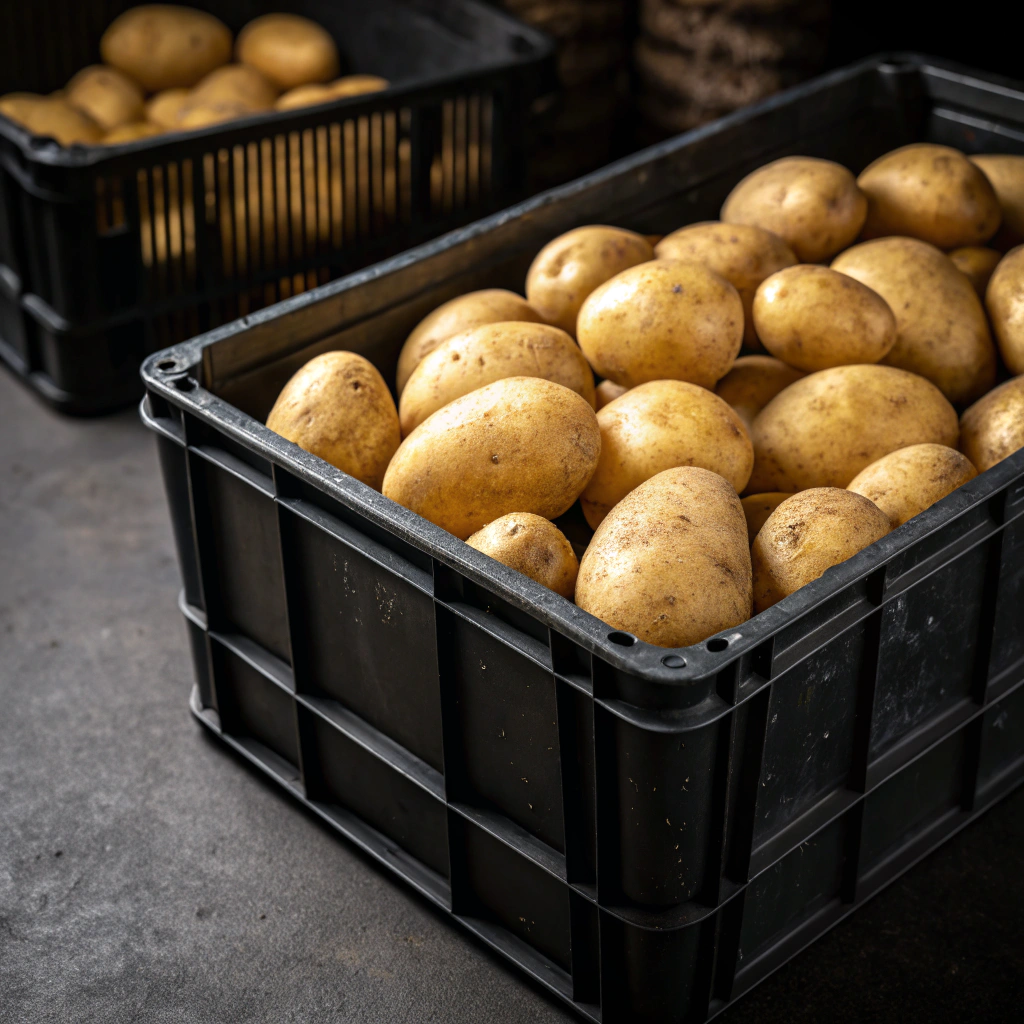
Regular checks help catch storage issues early with potatoes. I peek at my stored potatoes weekly, gently feeling for any soft spots or sprouting. Dark storage spaces can hide problems, so good lighting during inspections is crucial. Watch for potatoes developing a green tinge, which means they’ve been exposed to too much light and need eating soon.
The smell test never lies – properly stored potatoes should have virtually no scent. If you notice any musty or odd odors when checking your storage containers, investigate further. Sometimes rotating your potato stock or adjusting ventilation can solve minor issues before they become major problems.
When to Rotate Your Potato Stock
Learning when to rotate stored potatoes takes practice. I check my potato bins every couple of weeks, moving older spuds to the front for first use. Any potatoes showing early signs of sprouting should be shifted to your kitchen for cooking soon. The key to successful storage is using potatoes in the right order – first in, first out!
Temperature changes can affect how quickly you need to rotate stock. During warmer months, you’ll likely need to check and rotate stored potatoes more frequently. Keep track of when you store each batch and try to use them within their optimal storage window.
Safe vs Unsafe Changes in Stored Potatoes
Not all changes in stored potatoes signal trouble. Small sprouts can simply be rubbed off, while slightly wrinkled skin often means the storage area needs more humidity. However, some changes require immediate attention. Green patches mean the potato has developed solanine and should be discarded. Soft or mushy spots are definite signs it’s time to compost that spud.
Watch for potatoes that feel hollow or unusually light – these have likely dried out too much in storage. Dark spots or mold are deal-breakers; these potatoes need to go. Trust your instincts – if something seems off about a stored potato, it’s better to be safe than sorry.
Share Your Storage Success
Keep an eye on how your stored potatoes perform throughout the seasons. I’ve started marking purchase dates on storage containers and noting which varieties last longest. This simple habit has really improved my potato storage game and reduced waste. Share your experiences with our community – we love learning from fellow home cooks!






